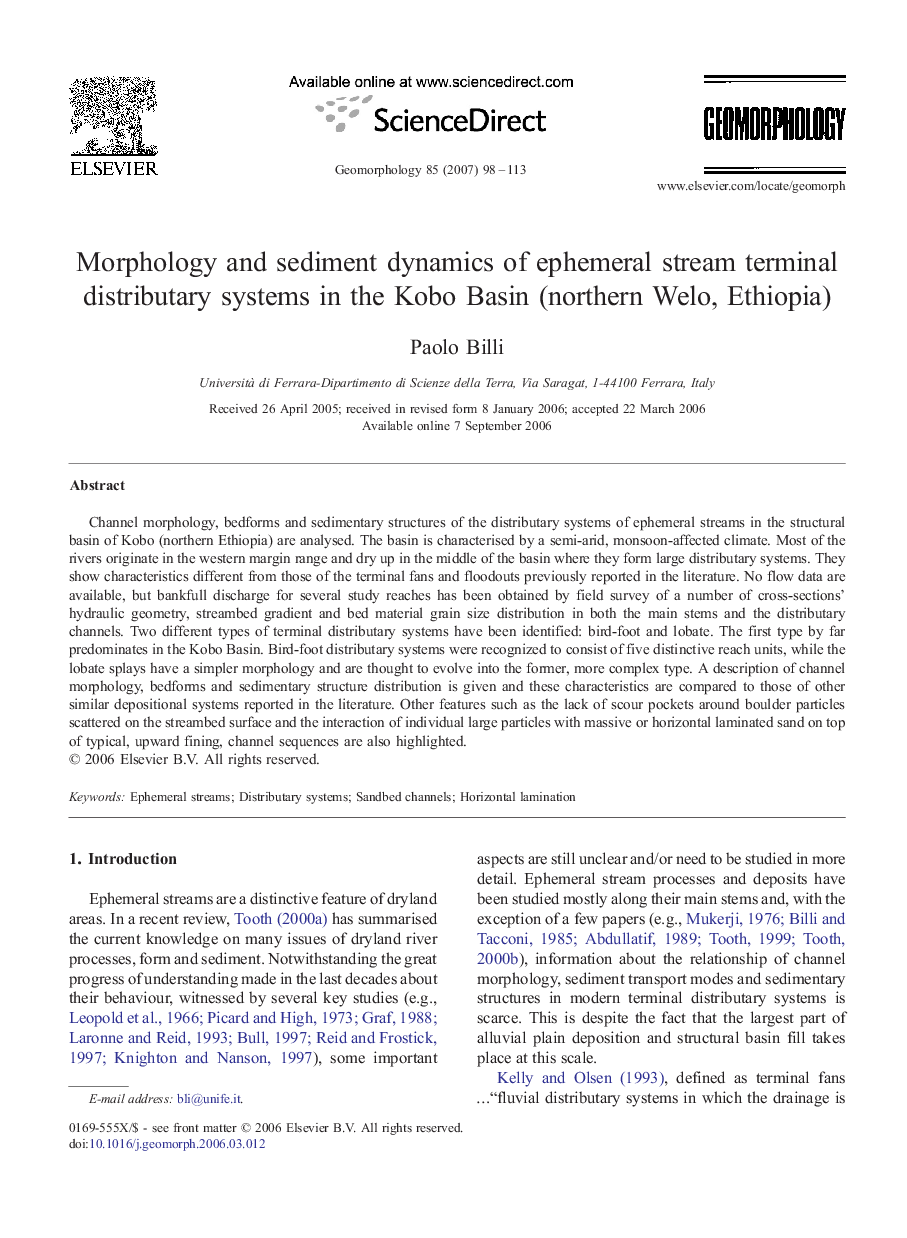| Article ID | Journal | Published Year | Pages | File Type |
|---|---|---|---|---|
| 4687385 | Geomorphology | 2007 | 16 Pages |
Channel morphology, bedforms and sedimentary structures of the distributary systems of ephemeral streams in the structural basin of Kobo (northern Ethiopia) are analysed. The basin is characterised by a semi-arid, monsoon-affected climate. Most of the rivers originate in the western margin range and dry up in the middle of the basin where they form large distributary systems. They show characteristics different from those of the terminal fans and floodouts previously reported in the literature. No flow data are available, but bankfull discharge for several study reaches has been obtained by field survey of a number of cross-sections' hydraulic geometry, streambed gradient and bed material grain size distribution in both the main stems and the distributary channels. Two different types of terminal distributary systems have been identified: bird-foot and lobate. The first type by far predominates in the Kobo Basin. Bird-foot distributary systems were recognized to consist of five distinctive reach units, while the lobate splays have a simpler morphology and are thought to evolve into the former, more complex type. A description of channel morphology, bedforms and sedimentary structure distribution is given and these characteristics are compared to those of other similar depositional systems reported in the literature. Other features such as the lack of scour pockets around boulder particles scattered on the streambed surface and the interaction of individual large particles with massive or horizontal laminated sand on top of typical, upward fining, channel sequences are also highlighted.
